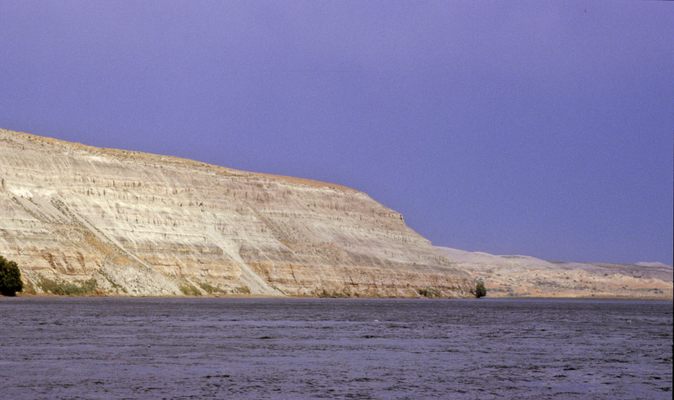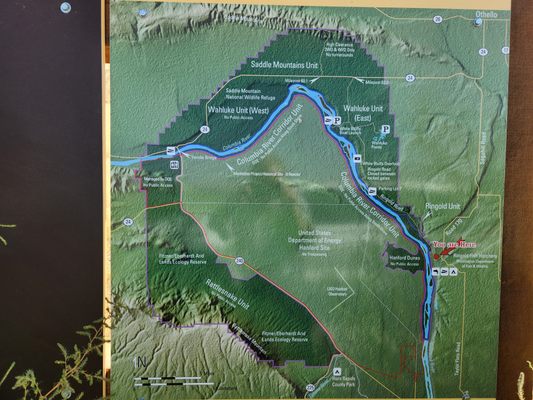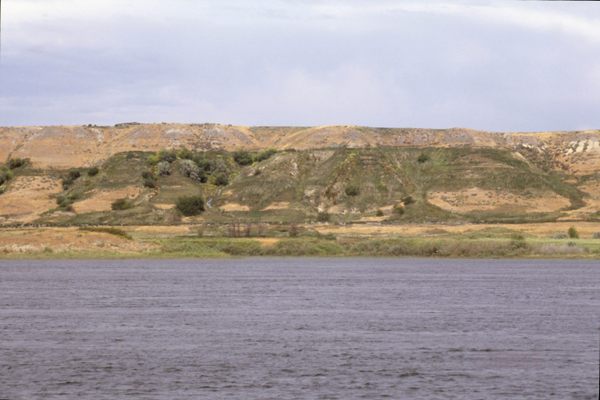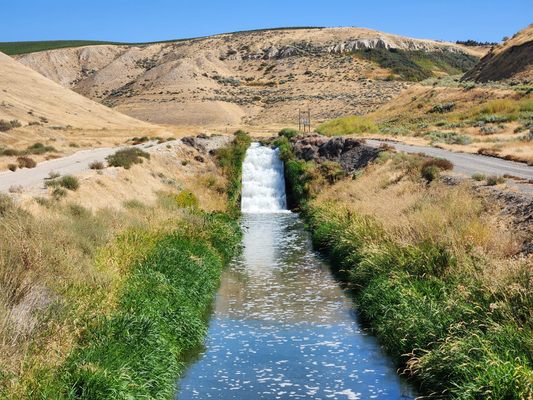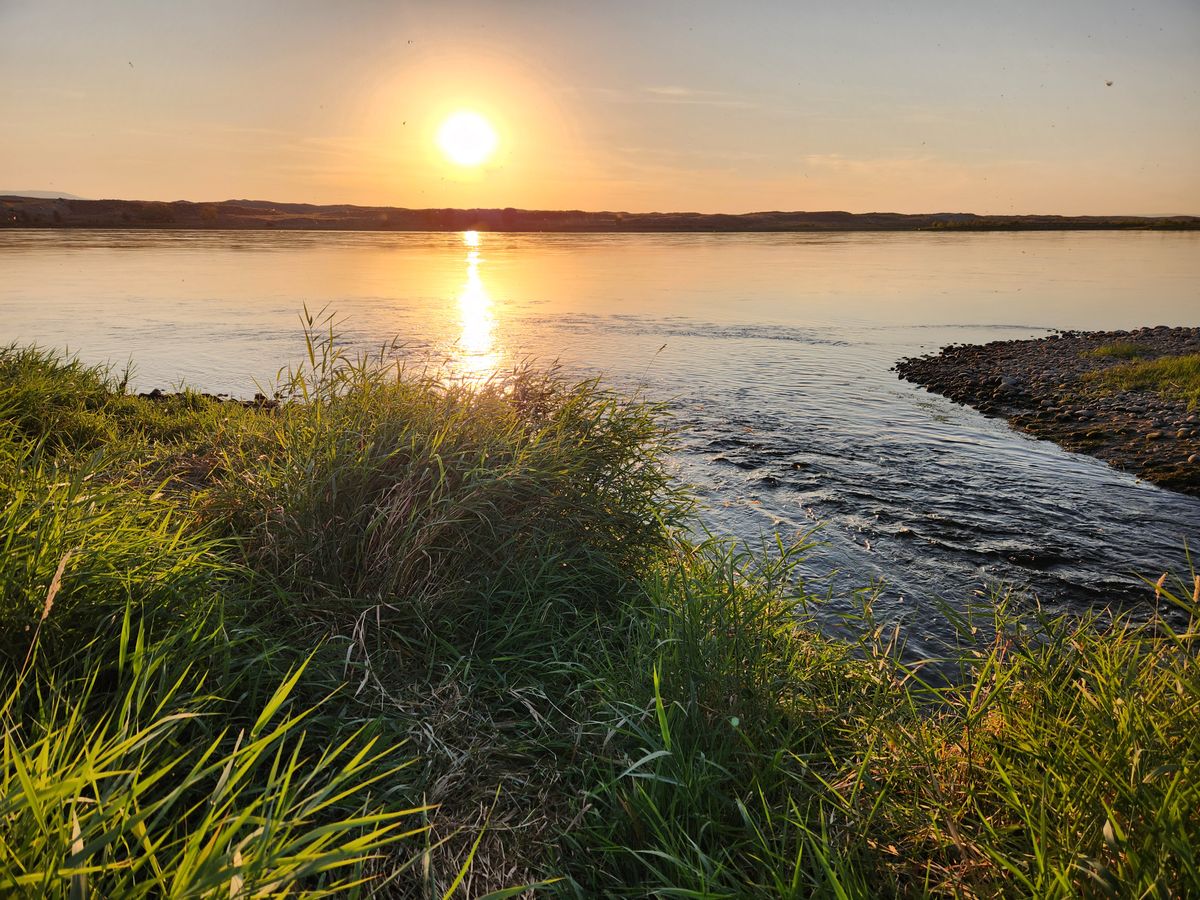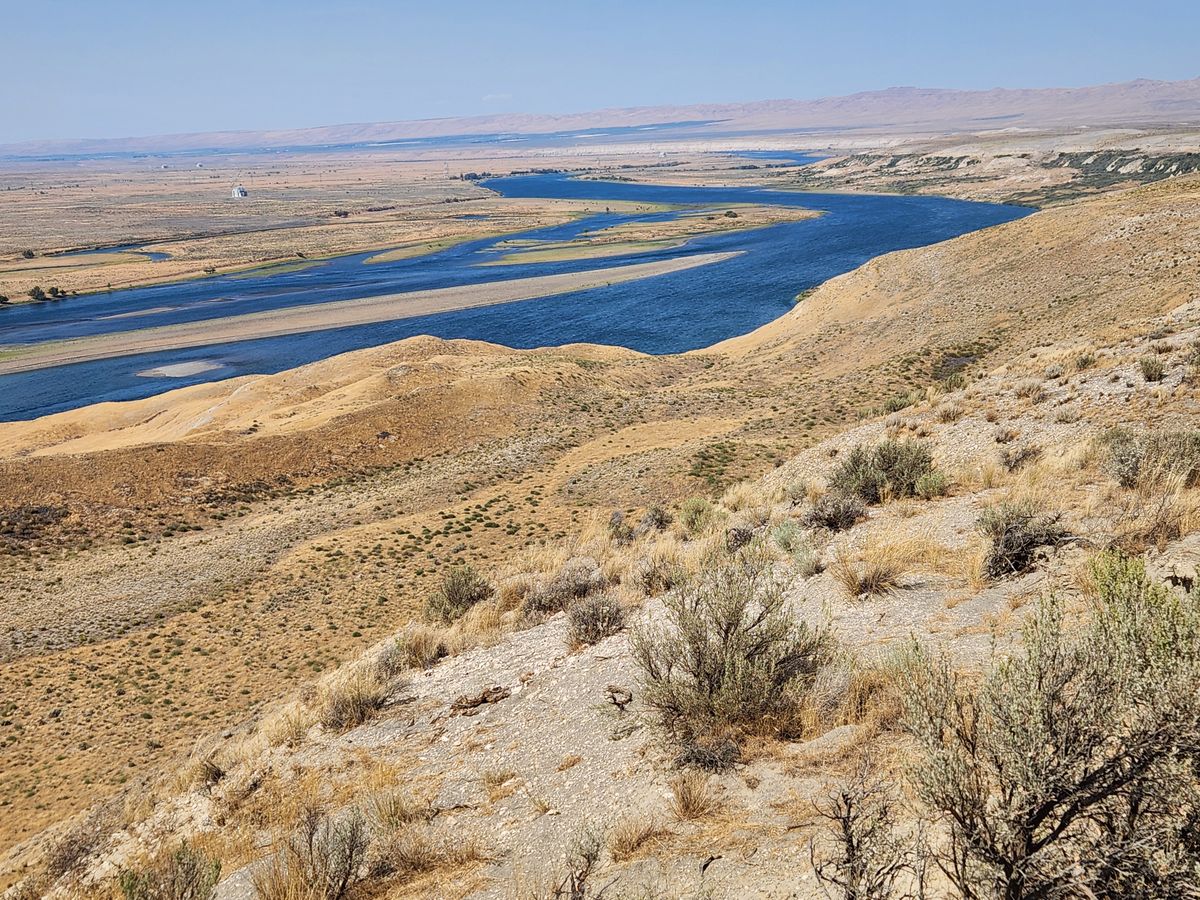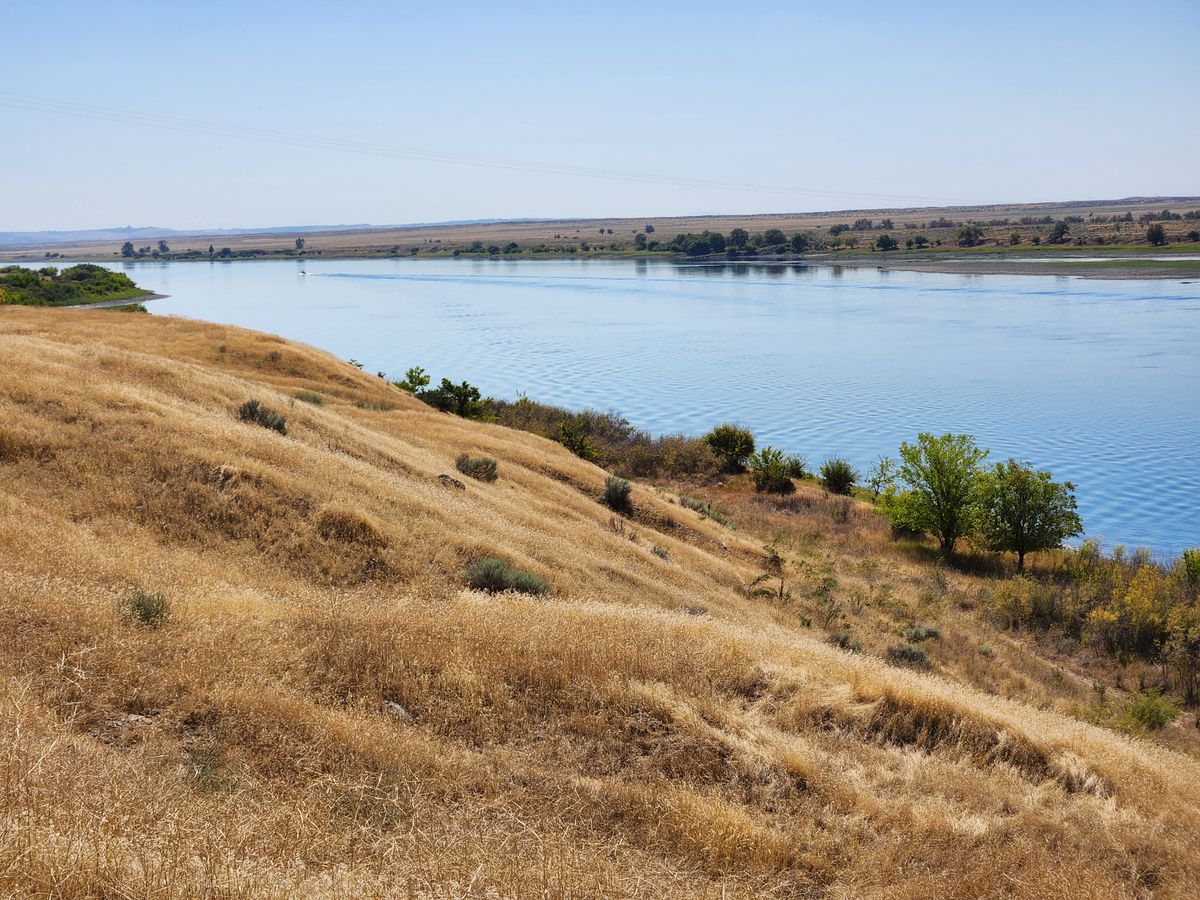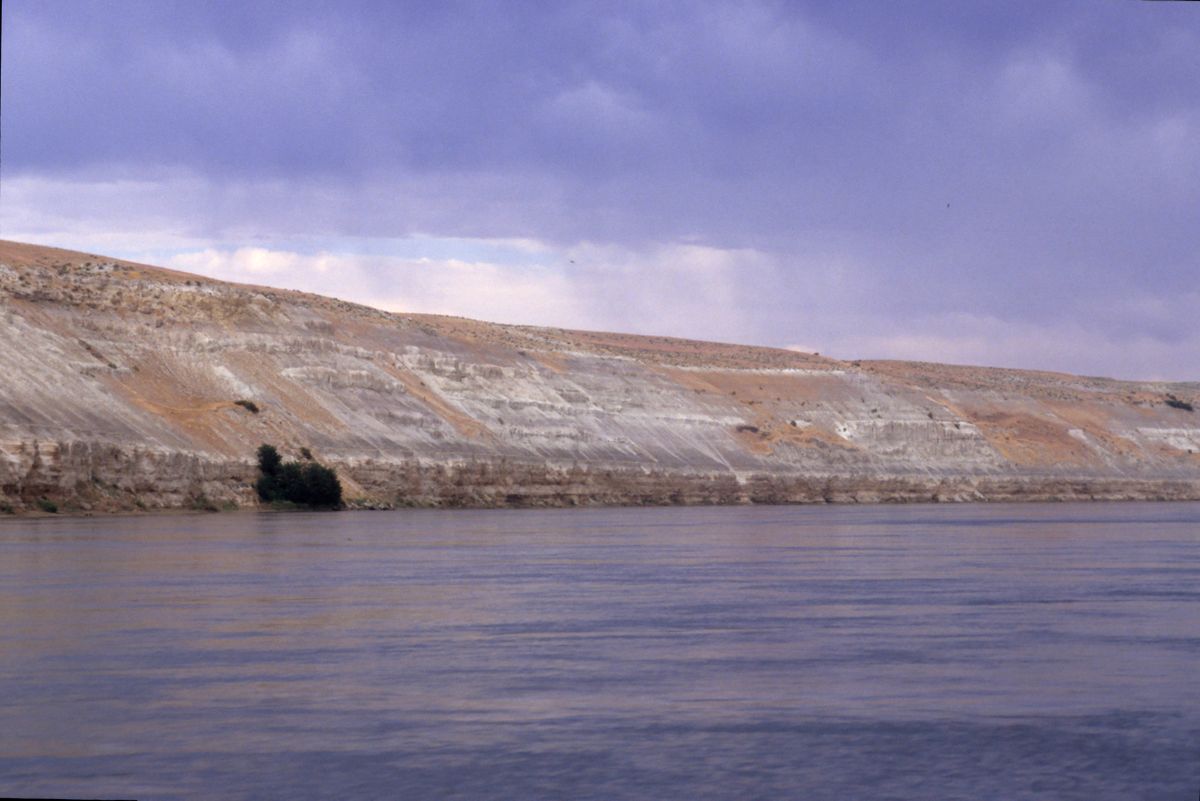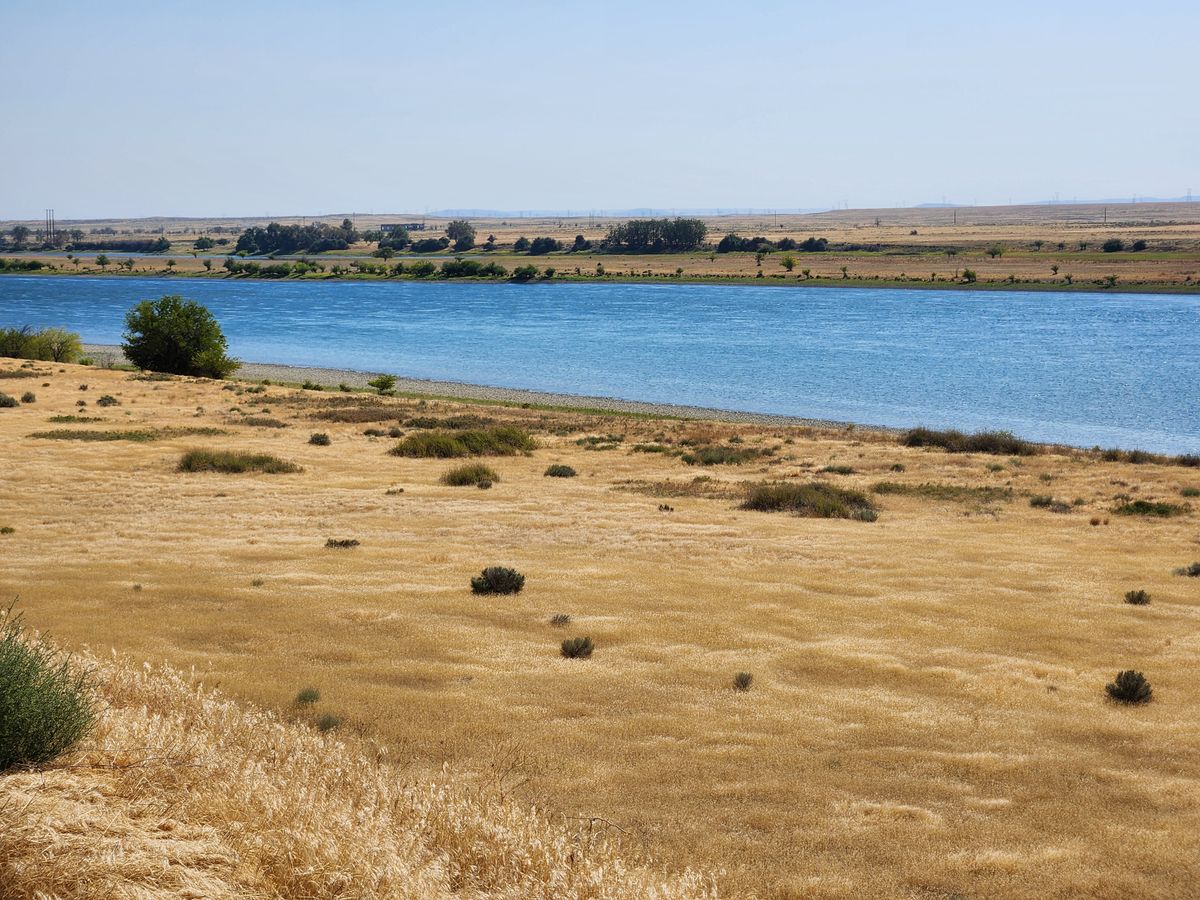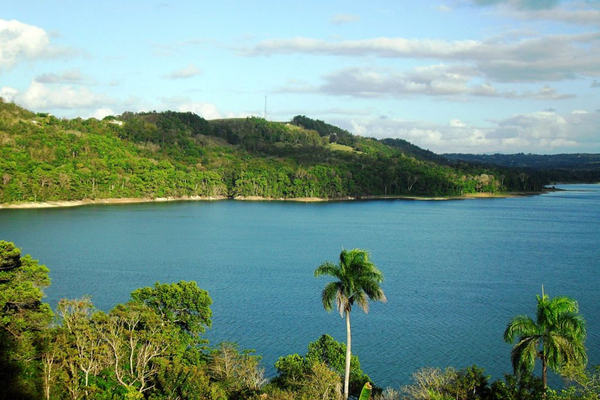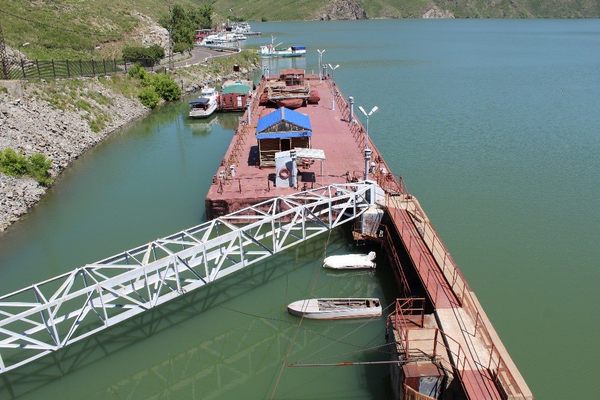About
The Hanford Reach, bordering the Hanford Site to the north and east, is by far the longest free-flowing stretch of the Columbia River in the United States. When the Hanford Site was built during World War II, the only dams downstream from Grand Coulee Dam were Bonneville and Rock Island, both completed in 1938. Since then, eight more dams have been built on the main stem of the Columbia, the last being John Day in 1971.
Dams have had a devastating impact on the salmon runs, even with ameliorating features such as fish ladders. Not only do salmon have difficulty navigating the slack water in the reservoir, but their spawning areas have been drowned. The result is that some 80 percent of the remaining salmon run now spawns in the reach. Other riparian species have also found the reach a refuge.
Nonetheless, the would-be dam builders in the Army Corps of Engineers persisted in their efforts to dam the reach too. The major justification was barge travel, although hydropower was also a consideration. Barges can travel up the Columbia (and its tributary the Snake, which enters the Columbia below the reach) all the way to Lewiston, Idaho, because the dams on that route are all equipped with locks. They proposed making barge travel possible all the way to Wenatchee on the Columbia, some 60-odd miles above the Priest Rapids Dam at the upper end of the reach. This would have required retrofitting locks onto the dams between Wenatchee and the reach, and building a new dam to flood the reach for barge traffic. This dam, to be named Ben Franklin, was proposed in the 1960s and again in the 1980s, but was ultimately blocked because it would have flooded radiologically contaminated areas. Undaunted, in the late 1980s the Corps instead proposed dredging a channel through the reach for the barges. This would have been equally devastating for the spawning grounds, and was also blocked.
With the end of the Cold War and the decommissioning of the Hanford reactors, national security was now not so much a consideration in allowing more public access to the area, but the radiological hazards were still present. Agitation to designate the reach as a wild and scenic river ran from the mid-80s through the 90s. Finally, the buffer areas around the Hanford site (but not the old Hanford site itself) were declared as the Hanford Reach National Monument by President Bill Clinton in 2000.
Related Tags
Know Before You Go
The only part of the National Monument currently accessible to the public is the East Wahluke Slope section, on the northeast side of the reach. It can be accessed at either end of the Ringold River Road, which is blocked to motorized traffic by gates in the middle where the road goes through the White Bluffs.
To get to the southern end of the Ringold River Road (at about 46.506256 N, 119.25355 W), take the Taylor Flats Road north from Pasco to the T-junction with Ringold Road (at about 46.49072 N, 119.19534 W) and turn left (west). Proceed about 3.8 miles to the intersection with Ringold River Road. Note that Ringold Road makes an acute left turn at a junction around 46.51262 N, 119.23971 W; the road turns into Road 170 if you keep going straight. This junction is about 3 miles from the junction with Taylor Flats Road. Ringold River Road is a graded road that should be passable by passenger cars in dry weather. It is about 8 miles to the locked gate. There are river access points along the way.
To get to the north end of the road, turn south off Washington State Route 24 at a junction around 46.73778 N, 119.41423 W onto a graded road. It should be marked for the Hanford Reach National Monument. About 4 miles in you come to an intersection. Turn right to go to the old site of the village of White Bluffs (named after the eponymous bluffs) and a boat launch ramp onto the Columbia. Turn left to go to the Wahluke Ponds. Keep going straight to stay on Ringold River Road. In a bit over four miles you will come to the locked gate where the road drops through the White Bluffs. There is a parking area and a spectacular overlook here.
Community Contributors
Added By
Published
November 4, 2024







